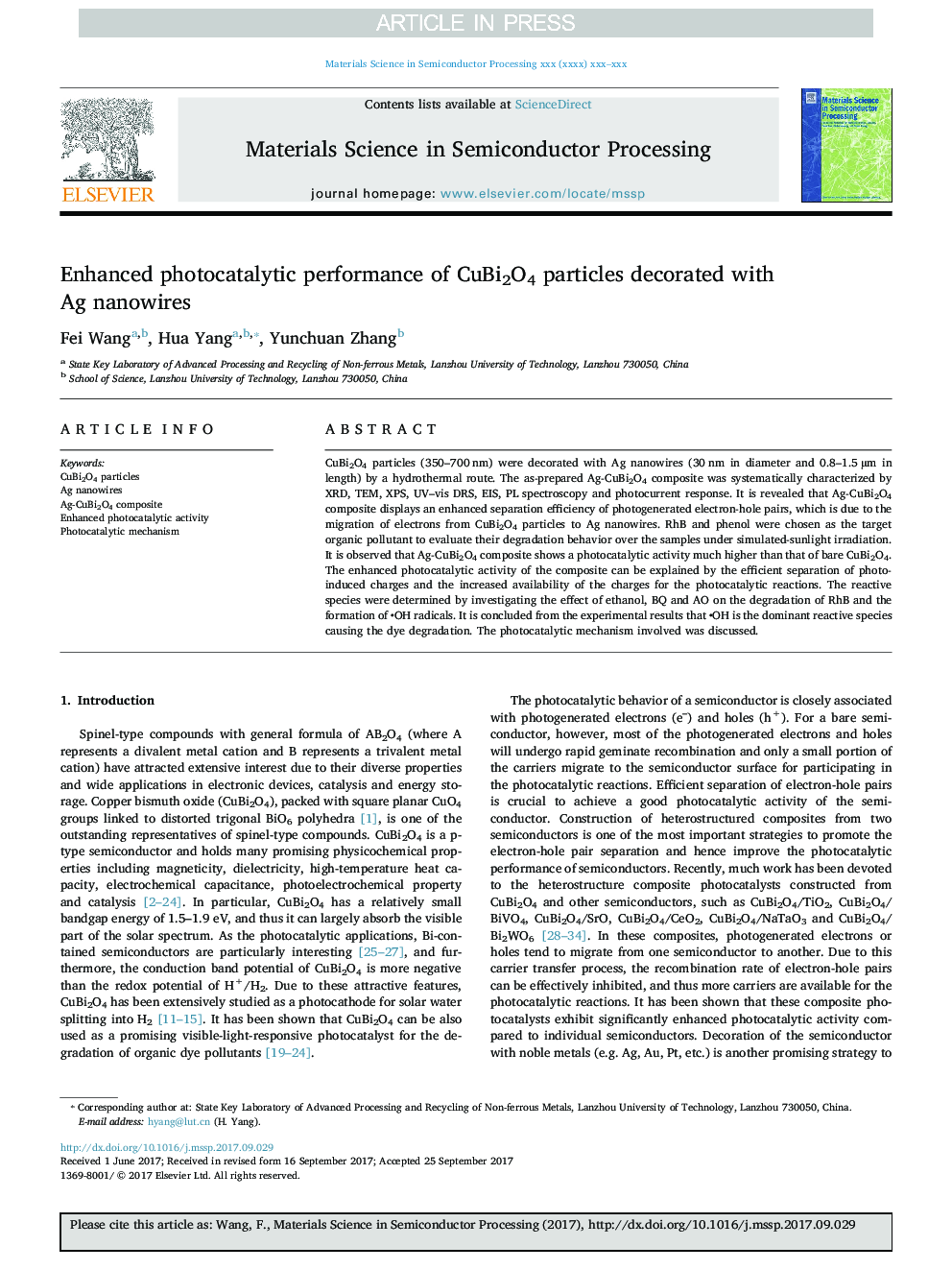| Article ID | Journal | Published Year | Pages | File Type |
|---|---|---|---|---|
| 7118201 | Materials Science in Semiconductor Processing | 2018 | 9 Pages |
Abstract
CuBi2O4 particles (350-700 nm) were decorated with Ag nanowires (30 nm in diameter and 0.8-1.5 µm in length) by a hydrothermal route. The as-prepared Ag-CuBi2O4 composite was systematically characterized by XRD, TEM, XPS, UV-vis DRS, EIS, PL spectroscopy and photocurrent response. It is revealed that Ag-CuBi2O4 composite displays an enhanced separation efficiency of photogenerated electron-hole pairs, which is due to the migration of electrons from CuBi2O4 particles to Ag nanowires. RhB and phenol were chosen as the target organic pollutant to evaluate their degradation behavior over the samples under simulated-sunlight irradiation. It is observed that Ag-CuBi2O4 composite shows a photocatalytic activity much higher than that of bare CuBi2O4. The enhanced photocatalytic activity of the composite can be explained by the efficient separation of photoinduced charges and the increased availability of the charges for the photocatalytic reactions. The reactive species were determined by investigating the effect of ethanol, BQ and AO on the degradation of RhB and the formation of
- OH radicals. It is concluded from the experimental results that
- OH is the dominant reactive species causing the dye degradation. The photocatalytic mechanism involved was discussed.
- OH radicals. It is concluded from the experimental results that
- OH is the dominant reactive species causing the dye degradation. The photocatalytic mechanism involved was discussed.
Related Topics
Physical Sciences and Engineering
Engineering
Electrical and Electronic Engineering
Authors
Fei Wang, Hua Yang, Yunchuan Zhang,
